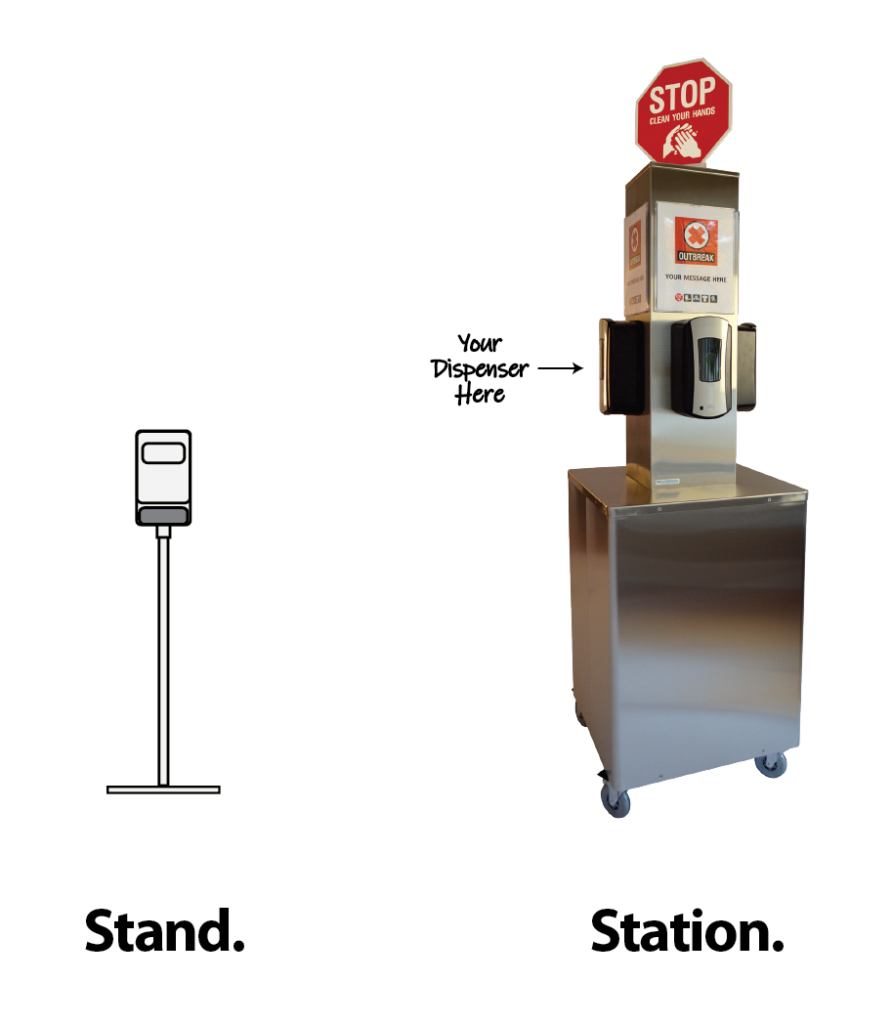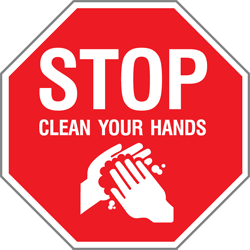
It’s been a while, hasn’t it?
Since we last posted, lots of things have happened, not the least of which is that the world’s infection prevention and control communications have been getting seriously tested in an all-encompassing, massive way. Global pandemics will do that.
More importantly, hand sanitizing infrastructure has been getting a great deal of scrutiny.
Since COVID-19 started, the number of hand sanitizing stations offered on the market has gone from a bare handful (there were only 3 Canadian companies making them that weren’t also liquid manufacturers by our count – us being one of them!) to dozens.
Would you guess it – like healthcare graphics, hand sanitizing station design also needs some serious help! You see, what many people don’t seem to get is that there’s a difference between a station and a stand!
Many seem to think that designing a station would be easy, and so they made a compact stand, put dispensers on it and wiped their hands on their pants. Done!
Well, the World Health Organization would disagree.
At the beginning of April in 2020 they published this report, which codifies the properties that make an effective Hand Sanitizing Station, in healthcare, travel and in general public spaces. Give it a read!
Those simple stand designs are simply not up to the task. Why?
1. They are not accessible to a population needing a diverse range of mobility assistance. This not only means that the mounting height needs to be accessible, but that the station can’t be toppled if a user leans on it for support, or needs a place to rest their cane, or needs to take their time using it. Some are foot-operated – perhaps those with mobility assistance aren’t meant to use them? What about battery-free manual dispensers, that need some pressure to use that can topple a stand? Regardless, the simple stand design simply fails those at greatest risk.
2. They rarely if ever include communications, and when they do it’s a single, small area. Small area means small type. If there is supplementary signage, it’s either poorly-designed or confusing (like advertising). Those with visual or literacy barriers are not reached. Once again, those at greatest risk are being failed.
3. They rarely mount more than one dispenser. Sanitizing your hands properly takes at least 20 seconds. If the stand is occupied, other visitors often pass by the stand rather than wait to enter. If the chain of infection remains intact even once, the whole facility is placed at risk.
4. The points made above together mean that they are highly ineffectual as calls-to-action inside entrances and exits. Stations need solid presence, visible signage, and environmental context. Stands seem like an afterthought, rather than a part of the building.
We’ve written a great deal in the past about all of the above, and it’s AMAZING to see it all being put to paper, finally. Our Tagg Clean-Hands® Sanitizing Stations have been promoting those 4 qualities since 2005. Not because anybody or any laws were telling us to, but because it was the right thing to do.
Our Floor Sanitizing Stations fit up to 4 dispensers, include signage (Stop: Clean Your Hands is large, bright, symbolic and readable from a distance) AND a user-printable message area, and is built to be solid and able to support people and their belongings. They really look like they’re part of the facility, inviting and meant to be used by everyone!
This is not to say that single-dispenser stations aren’t possible, our 1-shelf Wall Sanitizing Station shows that you can fit these traits into smaller, less traveled areas like landings or hallways while still not leaving anyone behind.
In short, the difference between a station and a stand is all about not failing people.
It seems that health outcomes and inclusion go hand in hand. Funny how that works?


Leave a Reply